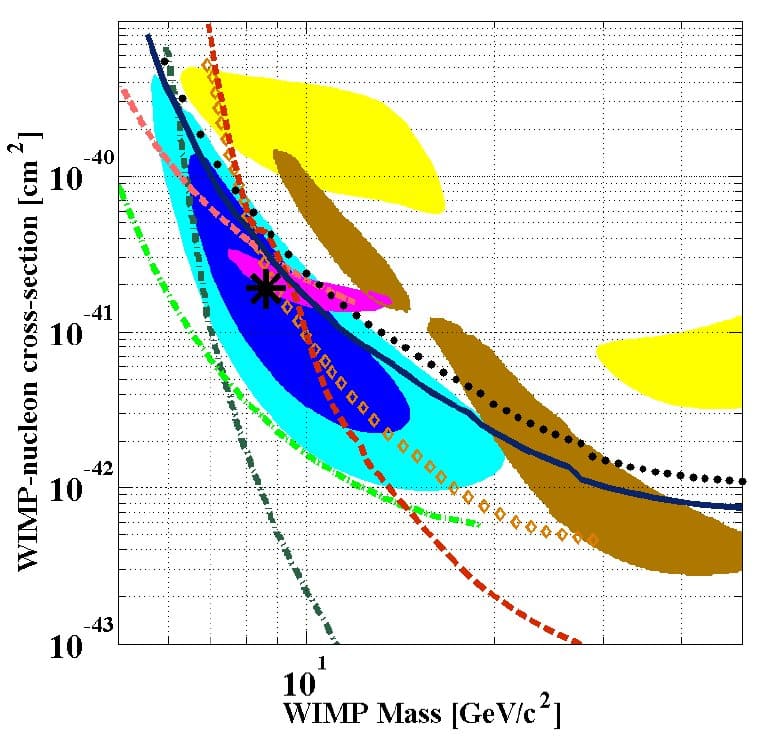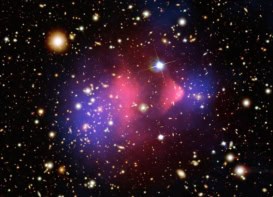
By Hamish Johnston
Physicists working on the Cryogenic Dark Matter Search (CDMS) may have spotted three dark-matter particles in data from a detector deep beneath the North Woods of Minnesota. The measurement has a statistical significance of about 3σ – which is a long way from the gold standard of 5σ that usually heralds the discovery of a new particle. That said, this result is the best evidence yet that dark matter could be detected directly as it passes through the Earth.
Although there is much more dark matter than conventional matter in the universe, physicists are at a loss to describe exactly what the mysterious stuff is.
Despite the CDMS results, the mystery looks set to continue because the measurements are in significant disagreement with another dark-matter experiment called Xenon, which is using a large quantity of liquid xenon to try to detect dark matter. While Xenon hasn’t claimed to have seen any dark-matter particles, it has managed to exclude large swathes of possible combinations of dark-matter mass and interaction strength with normal matter.
The CDMS dark-matter particles are best described as having a mass of about 8.6 GeV/c2. When plotted against the measured interaction strength (see diagram), the CDMS result (the black asterisk) falls well inside the region already excluded by Xenon to the right of the light- and dark-green dashed lines.
The story is even more curious because the measurements were made several years ago using a silicon detector – rather than the main germanium detector developed by CDMS. The team decided to revisit the silicon data because of a growing interest in the possibility that dark-matter particles could have mass of less than about 15 GeV/c2. Dark matter is detected when it collides with nuclei in the detectors and because silicon is less massive than germanium, it should be better at detecting lighter dark-matter particles.
A dark-matter particle weighing in at just 8.6 GeV/c2 is not something that many expected and it is seemingly at odds with several astronomical and particle-physics theories and observations. Indeed, very preliminary evidence from more indirect dark-matter searches such as AMS suggests a mass of several hundred GeV/c2.
Of course we know very little about dark matter, so who’s to say that there aren’t two or more dark-matter particles with very different masses. That’s the theme of a blog entry by Lubos Motl, which you can read here.
There is also a good discussion of the results on the Resonaances blog.
You can read a preprint describing the results here.



